Case Study Analysis
docx
keyboard_arrow_up
School
Jomo Kenyatta University of Agriculture and Technology *
*We aren’t endorsed by this school
Course
MISC
Subject
Business
Date
Nov 24, 2024
Type
docx
Pages
13
Uploaded by Buinga1998
1
Case Study Analysis Name
Course
Institution
Date
2
Table of Contents
Introduction
......................................................................................................................................
2
Section 1
..........................................................................................................................................
3
Business Overview
.......................................................................................................................
3
Size
...............................................................................................................................................
3
Sector and Industry of Operation
.................................................................................................
3
Direct and Indirect Competitors
...................................................................................................
4
Organisational Structure and Leadership Team
...........................................................................
4
Section 2
..........................................................................................................................................
4
Brexit and Covid-19 Pandemic Impact on Ryanair’s internal environment
................................
4
UK government’s recovery plan impact on Ryanair’s internal environment
.............................
5
Section 3
..........................................................................................................................................
6
UK Government’s Recovery Plan Impact on Ryanair’s Micro-Environment
.............................
6
Brexit and Covid-19 Pandemic Impact on Ryanair’s Micro-Environment
................................
7
Section 4 -PESTLE Analysis
...........................................................................................................
7
Political
........................................................................................................................................
7
Economic
.....................................................................................................................................
8
Social
............................................................................................................................................
8
Technological
...............................................................................................................................
8
Legal
.............................................................................................................................................
9
Environmental
..............................................................................................................................
9
Conclusion
.......................................................................................................................................
9
Suggestions for Ryanair to improve considering the micro, internal and macro analysis:
..........
9
Recommendations on how Ryanair can benefit from the UK government tourism recovery plan:
............................................................................................................................................
10
References
......................................................................................................................................
11
3
Introduction Dynamics in the corporate environment have a big influence on how well a company performs, how it interacts with its stakeholders, and what its strategic orientation is. Due to the worldwide pandemic and its repercussions, including the Brexit, the Covid-19 epidemic, and the global recession, it is more important than ever to analyze the influence of environmental dynamics, volatility, and uncertainty. In order to comprehend the environment in which an organization works, the sorts of organizations it competes and interacts with, and the dynamics of various marketplaces, it is crucial for company owners and executives to analyze the business environment. Organizations will be able to better manage their company operations and adapt to the dynamic business environment as a result.
The elements that affect an organization's performance and decision-making are included in the internal business environment. The organization's structure, culture, leadership, communication methods, and technology are included in this (Hamilton & Webster, 2018). The organizations and people in the organization's close vicinity who may have a significant effect on
its operations, such as suppliers, rivals, and local authorities, make up the micro business environment. The macro business environment is made up of the broader external elements that have an influence on an organization's operations, including the political, legal, and technical developments as well as social and economic trends.
The purpose of this case study, which will specifically focus on Ryanair, is to interpret the data from the case study, the UK government's tourism recovery plan, and Ryanair's annual reports to demonstrate how the data will affect Ryanair's internal, micro, and macro environments in both favorable and unfavorable ways.
Your preview ends here
Eager to read complete document? Join bartleby learn and gain access to the full version
- Access to all documents
- Unlimited textbook solutions
- 24/7 expert homework help
4
Section 1 Business Overview
The Ryan family established the low-cost airline Ryanair in 1985. Almost 129 million passengers traveled on the company's more than 2,000 routes in 38 countries in Europe and the Middle East in 2019. (Harvey & Turnbull, 2020). By scheduled passenger counts, it is the biggest European airline with a fleet of 470 Boeing 737-800 planes. The Irish and London Stock Exchanges both list Ryanair, a public limited business.
Ryanair provides its clients with a wide array of services, such as scheduled flights, vacation packages, vehicle rentals, and travel insurance. Moreover, food, beverages, snacks, additional legroom, and priority boarding are all available for sale to passengers on board (Barrett, 2017). Also, the business offers a number of internet services, including mobile boarding passes, online check-in, and flight status information.
Size
With a market capitalization of over €19 billion, Ryanair has grown to be one of Europe's
biggest airlines. The business recorded total sales of €8.4 billion in 2019, placing it as the fifth-
largest airline in the world by revenue. With a workforce of roughly 19,500, Ryanair ranks sixth among employers in the aviation sector. With 470 Boeing 737-800 aircraft in its fleet as of 2019,
the airline is the biggest operator of its kind in the world (Goh et al., 2020).
Sector and Industry of Operation
The airline business, which is a subsector of the transportation industry, is where Ryanair operates. Many major airlines, notably Ryanair, Lufthansa, Air France-KLM, British Airways, and EasyJet, dominate the fiercely competitive market. The competition between these businesses is based on a variety of variables, including cost, route network, customer service, loyalty programs, and product offers (Morrison, 2017).
5
Direct and Indirect Competitors
EasyJet, Lufthansa, Air France-KLM, British Airlines, and Vueling are among Ryanair's top rivals. These businesses provide comparable services and are active in the same markets as Ryanair. On elements like pricing, route network, customer service, reward programs, and product offers, they compete with Ryanair (Johnson et al., 2017). Budget airlines like Norwegian
Air Shuttle, Wizz Air, and Eurowings, as well as train companies and other ground transportation businesses, are additional indirect rivals of Ryanair. These businesses provide alternatives to flying and may displace some Ryanair consumers.
Organisational Structure and Leadership Team
A flat hierarchy underlies the Ryanair organizational structure. There are four key sections of the company: operations, marketing and communications, finance, and human resources. A group of top executives oversee each division, and they all answer to the CEO (Golden & Erne, 2022).
Michael O'Leary has served as the CEO of Ryanair since the company's founding in 1994. The Chief Operational Officer, Chief Financial Officer, and Chief Commercial Officer are the other members of the executive team. They are accountable for managing the business's operations, finances, marketing, and human resource activities.
Section 2 Brexit and Covid-19 Pandemic Impact on Ryanair’s internal environment
The internal climate of Ryanair has been significantly impacted by Brexit, the United Kingdom's (UK) secession from the European Union (EU). There are certain rules and limitations that apply to the airline since the UK is no longer a member of the EU, including the ability to fly across EU airspace and the ability to hire EU people as pilots and cabin staff (Slocum et al., 2020). The effect on Ryanair's employment and flight operations has been
6
significant. In order to comply with the new laws, the airline had to make considerable adjustments to its employees and flight routes, which raised the expenses connected with its operations.
The internal climate of Ryanair has also been significantly impacted by the Covid-19 epidemic. The airline was forced to cancel a large number of its flights as a result of international
travel restrictions. As a result, there has been a sharp decline in demand for air travel, which has cost the airline a lot of money. Ryanair's personnel has been significantly impacted by the epidemic as well (Efthymiou et al., 2021). Due to the pandemic, some pilots and cabin personnel have been furloughed or had their hours significantly curtailed. UK government’s recovery plan impact on Ryanair’s internal environment
The internal climate of Ryanair has been significantly impacted by the UK government's recovery plan. A variety of actions are included in the strategy to aid companies in recovering from the Covid-19 pandemic's economic effects. The most important change for Ryanair is the implementation of a new government-backed loan program, which enables the airline to get more financing to support its operations (Brunet-Thornton & Martinez, 2018). By expanding its operations and purchasing additional planes, the airline will be able to increase income. The program also gives Ryanair access to extra funding to aid with pandemic-related expenses like furlough compensation and other cost-saving initiatives.
Other steps taken by the government to improve Ryanair's internal climate include the temporary suspension of Air Passenger Duty (APD). By lowering ticket prices and facilitating more client accessibility, Ryanair has been able to boost demand for its services. Ryanair's internal climate is projected to improve as a result of the UK government's recovery plan's interim suspension of Air Passenger Duty (APD) (Brunet-Thornton & Martinez, 2018). APD is a
Your preview ends here
Eager to read complete document? Join bartleby learn and gain access to the full version
- Access to all documents
- Unlimited textbook solutions
- 24/7 expert homework help
7
flight tax that is often assessed to travelers departing the UK. Ryanair will be able to lower ticket
costs and, as a result, make its flights more appealing to passengers by suspending this tax. Ryanair's income will rise as a result, increasing the number of people they carry (Barrett, 2017).
It's internal environment will be impacted by the suspension of APD in an indirect manner. It will be more competitive in the market if ticket costs are lowered since it would be simpler for them to draw in new customers. Also, this will make it simpler for the airline to negotiate better prices with vendors like airports, which may assist to lower their expenses. Section 3
UK Government’s Recovery Plan Impact on Ryanair’s Micro-Environment
The microenvironment of Ryanair has been significantly impacted by the UK government's recovery strategy. First off, the strategy of the government has boosted consumer confidence. This is shown by the government's declaration of many initiatives to assist organizations and people impacted by the outbreak. These measures include a package of assistance for the aviation industry, such as a temporary reduction in Air Passenger Duty (APD), as well as the implementation of a new "air bridge" program to enable greater connectivity between other nations (Barrett, 2017). This has improved financial relief for people and companies, boosted connection between nations, and made air travel more accessible and inexpensive, all of which have had a beneficial effect on consumer confidence.
In terms of Ryanair's capacity to stay competitive, the government's recovery strategy has
also had an influence on the micro-environment. This is due to the government's strategy having given the airline industry financial assistance, allowing Ryanair to maintain its competitiveness in the face of mounting pandemic-related expenses (Worthington et al., 2018). This has been further enhanced by the introduction of a new "air bridge" program, which has assisted in
8
lowering the cost of air travel between other nations and allowed Ryanair to maintain its competitiveness.
Brexit and Covid-19 Pandemic Impact on Ryanair’s Micro-Environment
The microenvironment of Ryanair has been significantly impacted by the Covid-19 epidemic and Brexit. First, the airline's ability to operate has been significantly impacted by Brexit. This is due to the introduction of new guidelines and rules on air travel between the UK and other EU nations as a consequence of the UK's exit from the EU (Slocum et al., 2020). This has had a detrimental effect on Ryanair's capacity to operate as a result of the extra expenditures and administrative procedures that have been required in order for the airline to keep running.
The Covid-19 epidemic has also had a huge effect on Ryanair's microenvironment. This is due to the fact that the pandemic has significantly impacted the airline's capacity to operate, since the limits put in place to stop the virus' spread have caused a marked decline in demand for air travel (Albers & Rundshagen, 2020). Ryanair's financial situation has been directly affected because of this, since the airline has witnessed a considerable decline in revenue as a consequence of the decline in demand.
Section 4 -PESTLE Analysis Political, Economic, Social, Technological, Legal, and Environmental is referred to as PESTLE. These are the six elements that may significantly affect a company's success. Depending on how a company reacts, each of these elements may have either a beneficial or bad impact on the firm. Political
Political In the case of Ryanair, the government extensively regulates the airline business,
and in order for Ryanair to function, it must adhere to a number of rules and regulations (Hamilton & Webster, 2018). This includes the Open Skies Agreement between the EU and
9
airlines, which permits unrestricted airline operations throughout the EU and has allowed Ryanair to establish new routes and increase its operations. Also, Ryanair is required to abide with the UK's Air Passenger Duty, which is a surcharge on airline tickets.
Economic
The economic circumstances' effects on a firm are referred to as economic factors. When the economy is doing well, people are more inclined to travel, which will raise demand for Ryanair's services (Brinkman et al., 2014), Ryanair works in a sector that is directly related to the
economy. In contrast, individuals are less inclined to travel during a recession, which will have an impact on the demand for Ryanair's services.
Social
The effects of shifting societal values and attitudes on a corporation are referred to as social social factors. As more consumers are choosing to fly with Ryanair to save money, the airline has profited from the trend toward inexpensive travel (Malighetti et al., 2009). But, the company has also come under fire for how it treats its staff and its customers.
Technological
The effects of technological advancements on a corporation are referred to as technological aspects. The advent of e-tickets, which made booking and handling flights considerably simpler, and the growing use of technology in the airline business have all benefitted Ryanair (Morrison, 2017). In order to make it simpler for consumers to book flights and maintain their tickets, Ryanair has also made significant investments in its website and mobile application.
Legal
Legal considerations describe how laws affect a firm. Being an airline, Ryanair is obligated to abide by a variety of laws and rules, such as the UK's Air Passenger Duty and the
Your preview ends here
Eager to read complete document? Join bartleby learn and gain access to the full version
- Access to all documents
- Unlimited textbook solutions
- 24/7 expert homework help
10
EU's Open Skies Agreement. Also, Ryanair is required to abide with the UK's Health and Safety at Work Act (Brunet-Thornton & Martinez, 2018), which mandates that the airline guarantee the health and safety of its personnel while they are at work.
Environmental
The effects of environmental problems on a corporation are referred to as environmental factors. Ryanair must adhere to the EU's emissions trading system, which mandates that airlines purchase carbon credits to offset their carbon emissions (Goh et al., 2020). In order to lessen its influence on the environment, the airline must also take measures to minimize its fuel use, such as utilizing more fuel-efficient planes.
Conclusion Suggestions for Ryanair to improve considering the micro, internal and macro analysis: Ryanair may utilize micro analysis to pinpoint and examine certain aspects of the business, including operational effectiveness, customer satisfaction, staff engagement, and the influence of outside variables like the state of the economy, advancements in technology, and the
level of competition. Ryanair may be able to gain a competitive edge by doing this and enhancing its operations and performance. The company's strengths and shortcomings may be assessed as well as how to improve them through internal analysis. Ryanair may, for instance, identify areas of production and operations that need improvement or possible chances to boost efficiency (Goh et al., 2020). Ryanair may be able to discover future market possibilities and establish plans to take advantage of these chances by using macro analysis, which examines the general environment in which the firm works.
Recommendations on how Ryanair can benefit from the UK government tourism recovery plan:
Ryanair may take use of the many incentives and tax breaks that have been provided to assist companies recover from the impacts of the pandemic and thereby profit from the UK
11
government's tourist recovery plan. They include the Job Retention Program, which offers financial assistance to companies to help them retain workers on the payroll, and the Self-
Employment Income Support Scheme, which awards payments to those who work for themselves.
12
References
Albers, S. and Rundshagen, V. (2020). European Airlines' Strategic Responses to the COVID-19
Pandemic (January-May, 2020). Journal of Air Transport Management, 87, p.101863.
Barrett, S.D. (2017). The Sustainability of the Ryanair Model. In Strategic Management in Aviation (pp. 371-380). Routledge.
Brinkman, J., Bateman, I.N., Harper, D. and Hodgson, C. (2014). Unlocking: The Business Environment. Taylor and Francis. https://doi.org/10.4324/9780203782644
Brunet-Thornton, R. and Martinez, F. (2018). Analyzing the Impacts of Industry 4.0 in Modern Business Environments. IGI Global Publisher. 10.4018/978-1-5225-3468-6
Dima, A.M. and D'Ascenzo, F. (eds.) (2021). Business Revolution in a Digital Era. Springer Proceedings in Business and Economics, Springer.
Efthymiou, M., Usher, D., O'Connell, J.F., Warnock-Smith, D. and Conyngham, G. (2021). The Factors Influencing Entry Level Airline Pilot Retention: An Empirical Study of Ryanair. Journal of Air Transport Management, 91, p.101997.
Goh, S.F.C., Roberts, M., Xu, L.C. and Zeufack, A. (2020). Female Business Leaders, Business and Cultural Environment, and Productivity Around the World. World Bank Group Development Economics Development Research Group.
Golden, D. and Erne, R. (2022). Ryanair Pilots: Unlikely Pioneers of Transnational Collective Action. European Journal of Industrial Relations, 28(4), 451-469.
Hamilton, L. and Webster, P. (2018). The International Business Environment. 4th ed. Oxford: Oxford University Press.
Your preview ends here
Eager to read complete document? Join bartleby learn and gain access to the full version
- Access to all documents
- Unlimited textbook solutions
- 24/7 expert homework help
13
Harvey, G. and Turnbull, P. (2020). Ricardo Flies Ryanair: Strategic Human Resource Management and Competitive Advantage in a Single European Aviation Market. Human Resource Management Journal, 30(4), 553-565.
Hoffman, A.J. and Georg, S. (2018). Business and the Natural Environment. Routledge. https://doi.org/10.4324/9781351238946
Johnson, G., Regnér, P., Whittington, R., Scholes, K., Angwin, D. and Regner, P. (2017). Exploring Strategy: Text and Cases. Pearson Higher Education.
Malighetti, P., Paleari, S. and Redondi, R. (2009). Pricing Strategies of Low-Cost Airlines: The Ryanair Case Study. Journal of Air Transport Management, 15(4), pp.195-203.
Morrison, J. (2017). The Global Business Environment: Challenges and Responsibilities. 4th ed. London: Palgrave.
Slocum, S.L., Aidoo, A. and McMahon, K. (2020). The Business of Sustainable Tourism Development and Management. London: Routledge. https://doi.org/10.4324/9781351031066
Worthington, I., Britton, C. and Thompson, E. (2018). The Business Environment: A Global Perspective. 8th ed. Harlow: Pearson.
Related Documents
Recommended textbooks for you
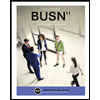
BUSN 11 Introduction to Business Student Edition
Business
ISBN:9781337407137
Author:Kelly
Publisher:Cengage Learning
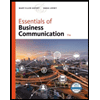
Essentials of Business Communication (MindTap Cou...
Business
ISBN:9781337386494
Author:Mary Ellen Guffey, Dana Loewy
Publisher:Cengage Learning
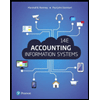
Accounting Information Systems (14th Edition)
Business
ISBN:9780134474021
Author:Marshall B. Romney, Paul J. Steinbart
Publisher:PEARSON
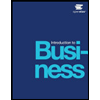
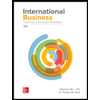
International Business: Competing in the Global M...
Business
ISBN:9781259929441
Author:Charles W. L. Hill Dr, G. Tomas M. Hult
Publisher:McGraw-Hill Education
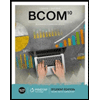
Recommended textbooks for you
 BUSN 11 Introduction to Business Student EditionBusinessISBN:9781337407137Author:KellyPublisher:Cengage Learning
BUSN 11 Introduction to Business Student EditionBusinessISBN:9781337407137Author:KellyPublisher:Cengage Learning Essentials of Business Communication (MindTap Cou...BusinessISBN:9781337386494Author:Mary Ellen Guffey, Dana LoewyPublisher:Cengage Learning
Essentials of Business Communication (MindTap Cou...BusinessISBN:9781337386494Author:Mary Ellen Guffey, Dana LoewyPublisher:Cengage Learning Accounting Information Systems (14th Edition)BusinessISBN:9780134474021Author:Marshall B. Romney, Paul J. SteinbartPublisher:PEARSON
Accounting Information Systems (14th Edition)BusinessISBN:9780134474021Author:Marshall B. Romney, Paul J. SteinbartPublisher:PEARSON
 International Business: Competing in the Global M...BusinessISBN:9781259929441Author:Charles W. L. Hill Dr, G. Tomas M. HultPublisher:McGraw-Hill Education
International Business: Competing in the Global M...BusinessISBN:9781259929441Author:Charles W. L. Hill Dr, G. Tomas M. HultPublisher:McGraw-Hill Education

BUSN 11 Introduction to Business Student Edition
Business
ISBN:9781337407137
Author:Kelly
Publisher:Cengage Learning

Essentials of Business Communication (MindTap Cou...
Business
ISBN:9781337386494
Author:Mary Ellen Guffey, Dana Loewy
Publisher:Cengage Learning

Accounting Information Systems (14th Edition)
Business
ISBN:9780134474021
Author:Marshall B. Romney, Paul J. Steinbart
Publisher:PEARSON


International Business: Competing in the Global M...
Business
ISBN:9781259929441
Author:Charles W. L. Hill Dr, G. Tomas M. Hult
Publisher:McGraw-Hill Education
